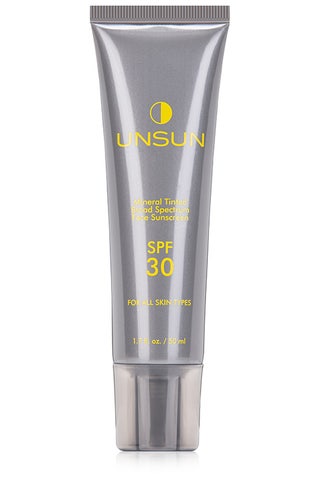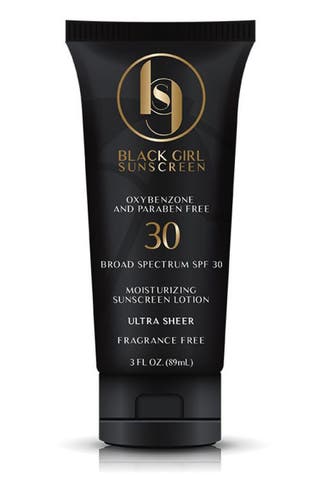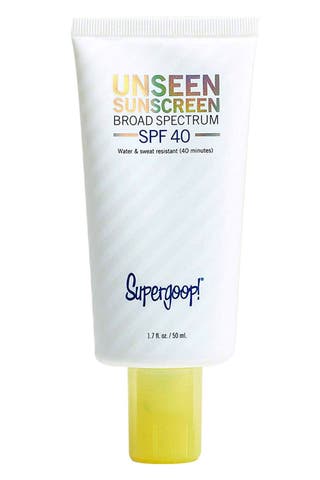You know when you dab on some concealer or foundation, or catch your reflection in some incredibly rude fluorescent lighting, and all you see is bumps and pores and uneven spots? Yeah, that's called skin texture—and everybody has it. Seriously. Even the celebs whose faces seem cut from glass. BUT, that doesn't mean that you have to live with all the bumps and marks if they're bumming you out.
Even though you'll never get perfectly slick, pore-less skin (it's literally not possible...or human), you can help smooth out your skin texture and fade dark spots and melasma with the right routine and facts. Ahead, Miami-based board-certified dermatologist Loretta Ciraldo, MD, explains why the texture on your face looks and feels the way that it does, and shares the best skin texture products and treatments to help smooth it all out.
This content is imported from {embed-name}. You may be able to find the same content in another format, or you may be able to find more information, at their web site.
What does skin texture look like?
Skin texture can include bumps, enlarged pores, rough patches—anything that makes your skin looks less smooth and luminous. And if you're experiencing any of the above, you might also notice a little discoloration or redness too, says Dr. Ciraldo, since uneven skin texture typically goes hand-in-hand with uneven skin tone or hyperpigmentation.
Why is my skin texture so bumpy?
How much time do you have? No, seriously, bumps on your skin could be so many different things, but typically, Dr. Ciraldo says uneven skin texture is the result of a slowed-down shedding of dead skin cells, usually due to natural aging. Your skin texture could also be bumpy from psoriasis, contact dermatitis, keratosis pilaris, or even acne scars and pockmarks. And, last but not least, the source of your texture could be the sun—i.e., the culprit behind most skin concerns, and for good reason.
You're already aware of how sun exposure can mess with your skin tone (freckles, melasma, dark spots, etc.), but the same can also be said about its effect on your skin's texture. As Dr. Ciraldo explains it, UVB rays cause the premature death of living skin cells, which can lead to increased skin roughness, while UVA rays increase pigment production that'll give your skin an overall mottled texture and skin tone. Fun!
How do you get rid of texture on your face?
You're not without options, but you gotta have the right products and ingredients first. Below, a few ways you can starting tackling your texture at home.
1. Exfoliate with glycolic acid
Exfoliating your face is a super important step for achieving and maintaining optimal skin texture. That said, tread very lightly—i.e., only chemical exfoliants (like acids and peels at low doses) instead of harsh scrubs. Dr. Ciraldo stresses that over-exfoliation can cause irritation and dry out your skin (which means even more rough patches), so starting with one at-home exfoliator (like a 10 percent glycolic acid serum, or one of the options below) just a few times a week is best.
2. Use salicylic acid if you're acne-prone
Mild exfoliation, even during summer months, is key for uneven skin texture, and if you're acne-prone, Dr. Ciraldo recommends exfoliating with salicylic acid to help unblock the clogged pores and blackheads that could be making your pores look bigger and more textured.
3. Soften skin with lactic acid
If your rough skin is also dry skin, help soften it up with a little lactic acid. Dr. Ciraldo says if you're naturally very dry, this gentle exfoliating acid is the most hydrating of the chemical exfoliators in the alpha hydroxy acid (AHA) family, so you can hydrate while you slough the dead skin away.
4. Add a retinoid into your routine
Not only can retinoids help speed up your cellular turnover for smoother, brighter skin, but they can also boost collagen production and strengthen the walls of your pores. If you're new to retinoids (welcome!), gradually incorporate one into your routine by massage a pea-size squeeze over your clean, moisturized skin one night a week for one week, then two nights for two weeks, and then three nights for three, until you're applying it every other night without dryness or irritation.
The only caveat? You gotta wear sunscreen every single day when you're using a retinol in your routine, or your skin will be extra sensitive to the sun (and dark spots and scarring). Which brings us to...
5. Wear. sunscreen. daily.
Wearing a broad-spectrum SPF will help so freakin' much with preventing all the damage caused by UV radiation that contributes to the uneven skin texture we covered earlier. Wear your sunscreen and reapply it throughout the day, promise?
6. Get a deeper exfoliation with an at-home peel
Another top pick of Dr. Ciraldo: an at-home glycolic peel. A step-up from your glycolic acid serum, an at-home face peel version uses the same ingredient at a higher concentration (but, ya know, still safe for you to use yourself) for increased results.
7. Carefully use an at-home dermarolling device
Dermarolling is an at-home/in-office treatment that involves creating tiny punctures in the skin with a needle-covered roller to help generate newer, smoother, brighter skin. It's best left to the professionals, but you can do it at home with caution to help improve your skin texture and improv how well your face serums absorb into your skin afterward. Better absorption = better results.
What is the best treatment for skin texture?
Well, that depends on the cause of your skin texture. When texture issues are due to the buildup of dead cells, Dr. Ciraldo recommends in-office treatments, like a HydraFacial (a gentle facial that exfoliates, extracts, and hydrates), a higher strength glycolic acid peel (yup, even higher and more effective than your at-home one), or a salicylic acid peel.
And when texture issues are caused by changes in dermal collagen, Dr. Ciraldo suggests microneedling (a more intense form of dermarolling), filler injections, or TCA (trichloroacetic acid) peels. Depending on your skin type, your derm might even suggest laser treatments to help remove discoloration and smooth uneven texture.
The takeaway:
With so many potential factors that contribute to uneven skin, like acne scarring, sun damage, and aging, it's hard to say exactly what's causing the irregularities in your specific skin texture. While gentle chemical exfoliation and proper sun protection might help, the only real way to know what you’ve got going on is with a proper evaluation and diagnosis, so see your derm to really smooth things over.
This content is created and maintained by a third party, and imported onto this page to help users provide their email addresses. You may be able to find more information about this and similar content at piano.io
"smooth" - Google News
May 15, 2021 at 02:44AM
https://ift.tt/3ycOdUo
How to Smooth Skin Texture on Face and Improve Uneveness in 2021 - Cosmopolitan.com
"smooth" - Google News
https://ift.tt/30JhCVH
Shoes Man Tutorial
Pos News Update
Meme Update
Korean Entertainment News
Japan News Update
Bagikan Berita Ini



























0 Response to "How to Smooth Skin Texture on Face and Improve Uneveness in 2021 - Cosmopolitan.com"
Post a Comment